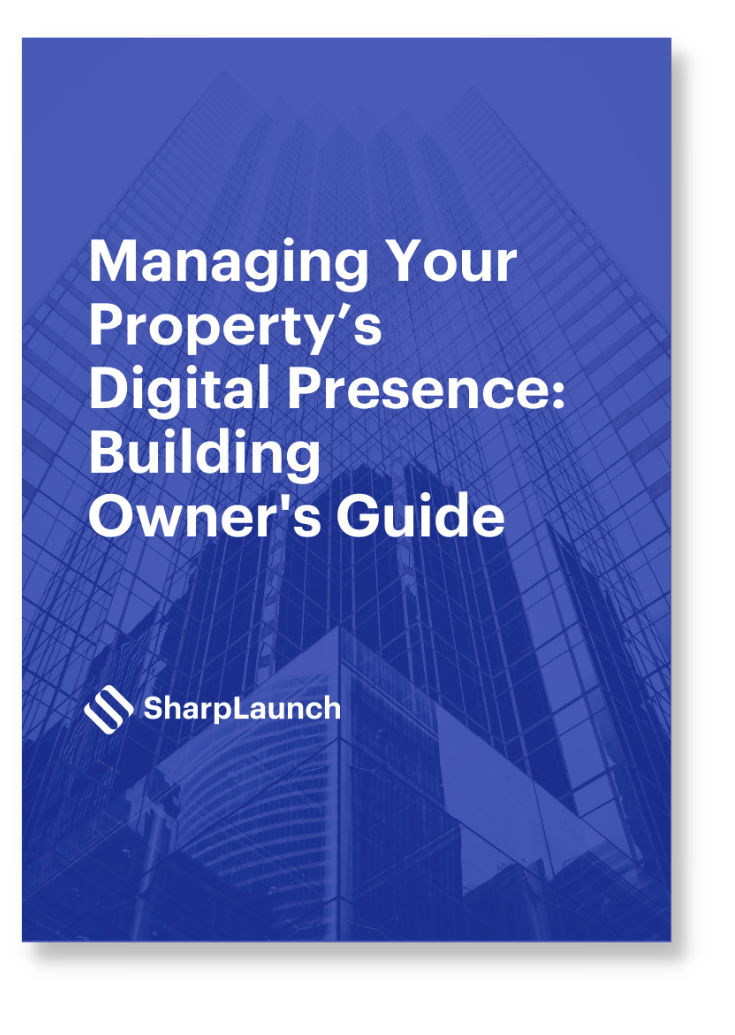
Marketing Best Practices
The Essential Guide to Commercial Real Estate Advertising
As the world pushes further into the digital sphere in response to the global pandemic, many companies are searching for the best commercial real estate advertising strategy to embrace the unprecedented challenges and unexpected opportunities of these uncertain times – and the commercial real estate industry is no exception.
With the volatility in global financial markets putting an edge on even the rosiest of growth outlooks, firms are taking a fresh look at their commercial real estate advertising efforts to ensure they are reaching the right number of the right people at the right time in the most cost-effective way.
Whether you need to maximize your advertising budget or want to better capitalize on the countless interactions happening online these days, you need to know how to choose the best channels for your commercial real estate ads to reach a bigger audience that is also more targeted and engaged.
Now more than ever, being savvier about advertising your commercial real estate offerings can help you take advantage of the different benefits offered by different channels, including:
- Instant access to a large, engaged, and interested audience
- Flexibility and fast results to test different marketing messages and targeting profiles
- Powerful and detailed analytics to track your spend and monitor ROI
So, how do you advertise commercial real estate in an ever-changing world?
Read on to discover the key details you need to know about the top five advertising channels for your commercial listings. You will learn about reasons to choose each option, including their audience profiles, ad formats, and pricing estimates. Additionally, as you plan your next campaign, you can also check out our post with great commercial real estate marketing ideas as inspiration for expanding and enhancing your company’s digital footprint.
1. Advertise on Commercial Real Estate Listings Websites
At the top of the list are the commercial real estate websites that allow you to quickly put your premier properties in front of an audience already deep into the research and evaluation process.
Besides the costlier sites like CoStar and LoopNet, there are several good options that offer specific pricing and advertising packages based on your specific needs.
Why Advertise in CRE Listings Sites?
Commercial real estate listings sites are online marketplaces that connect tenants and buyers with properties for lease and sale.
You can aggregate available commercial spaces for sale, lease, sublease or co-working and allow your ideal prospects to search them based on their location, space needs, and amenities.
Who is the Target Audience?
The audience for CRE listing sites are investors, brokers and tenants searching for different types of commercial properties for sale or lease.
Because they are content-rich and updated constantly, they rank well in Google for location and amenity-specific searches, and will be viewed by interested prospects who are early in the buying cycle, as well as those familiar with these sites and performing more targeted searches.
Common Advertising Format
Most CRE listing sites offer a combination of free and paid features depending on their reach and audience. Most free plans are time limited and provide minimal features for describing your properties.
- Subscription plans – These depend on the number of property listings, location, users or number of leads you will receive. Memberships also range from single properties to enterprise plans for brokerage offices with multiple properties and agents.
- Premium listings – The majority listing sites offer the possibility to enhance the visibility of your listings within their search results.
2. Advertise in Trade Journals
Commercial real estate trade journals such as Urban Land Magazine, National Real Estate Investor and Real Estate Forum are commonly read by other CRE professionals and prospective tenants/buyers who are active in the industry. They feature the latest industry insights, market trends, market reports and thought leadership articles that can be highly relevant to your target audience.
Why Advertise in Commercial Real Estate Trade Journals?
Trade journals offer specialized content focus that trade publications have for commercial real estate topics. Advertising in commercial real estate trade journals gives you the chance to reach a highly targeted audience of potential clients and partners and at the same time drive brand awareness for your business.
Who is the Target Audience?
Trade journal audience are commercial real estate professionals interested in reading about industry trends in office, retail, industrial, multi-family space, the impact of economic conditions on the market, and industry leader outlooks from the top experts in the field. They are plugged into the industry unlike anyone else and are a captive audience for the right campaigns.
Common Advertising Formats
There are often multiple different advertising options available depending on the publication, the number of channels they manage, and their circulation numbers. These include:
- Magazine/Journal Advertising – This will depend highly on circulation and placement – it can range from $500 to $10,000.
- Newsletter Advertising – Many of these sites also offer newsletters, in which you can place ads or featured content for between $600-$3,000.
- Website Advertising – Traffic tends to be higher for website advertising and rates fluctuate accordingly, starting at $500 and ranging upwards depending on unique visitors per month.
You can learn more about the biggest trade journals and their advertising options in our in-depth list of commercial real estate trade journals.
3. Advertise on News Sites & Blogs
While many trade journals have a dedicated web presence with significant traffic, they are often formatted and presented differently than traditional commercial real estate blogs and news sites such as The Real Deal, Globest.com or commercial real estate verticals on Inc.com or WSJ.com.
Why Advertise in Commercial Real Estate News Sites & Blogs?
Much like trade journals, these sites are designed to provide thought leadership and industry news to professionals in the commercial real estate industry. They highlight recent news, columns by leading voices in the industry, and frequently searched trends. More importantly, they drive large visitor numbers that you can target through your ads.
Who is the Target Audience?
News sites and blogs tend to have a slightly more diverse audience than trade journals, which are designed for a narrow, but highly targeted audience. As a result, a website like The Real Deal will generate more pageviews and visitors per month but may include people outside dedicated developers and commercial real estate professionals. Your audience likely includes private investors, tenants, researchers, and those staying up to date on the market in general. The breakdown tends to lean towards CXX and ownership, as well as EVP, SVP, and acquisitions focused individuals with a smaller contingent of finance professionals, brokers, and lawyers.
Common Advertising Formats
Advertising on a news site or blog is available in several forms, including:
- Banner Ads – These are placed throughout the site, above the fold, in the sidebar, or alongside specific posts. The placement and size of the ad will determine the cost, which is then scaled against the number of impressions expected in the period during which you advertise.
- Email Newsletter – Most news and blogs sites will maintain a sizable email distribution list and offer sponsored content opportunities to that list. Rates will depend on the size and quality of the list.
- Sponsored Content – Many but not all news and blog sites offer sponsored content opportunities. Thought leadership alongside your company’s name that highlights an area that is particularly impactful to your target audience.
4. Advertise with Google AdWords
The world’s largest advertising network is tempting for any business attempting to generate leads online. Google owns more than 75% of the search market share in North America and has the world’s largest online display advertising network, reaching more than 80% of global Internet users, so investing in AdWords is attractive, but is it a good fit for your commercial real estate business?
Why Advertise on Google AdWords?
Google AdWords is the advertising platform that runs alongside Google’s search results. It also powers display ads and video advertising on millions of websites and YouTube. Google’s ad network is extensive. It reaches billions of people around the globe, and is ubiquitous on both desktop and mobile devices. Simply put, if you want people to see your advertisements, Google is the best way to do so.
Who is the Target Audience?
Everyone. And while this is mighty tempting, it can also lead to excessive, poorly targeted spend. Google’s text ads work by targeting specific keywords that someone might search for in the search engine, charging for every click on that ad by a user. If you are too broad, it is easy to attract not only the wrong people to your website, but to do so for the wrong searches. Google AdWords can be setup and running in less than 10 minutes, but for proper targeting that doesn’t cost you a fortune, it needs to be finely tuned.
Common Advertising Formats
There are two main types of campaigns on Google AdWords, each with dozens of permutations and options. They include:
- Google Search – The text ads that appear above and below Google’s search results are bid on by advertisers at a per-click rate. The amount you pay will depend on your bid, the competition for that term, and other factors like quality score and how relevant your website is.
- Display Network – Google’s display ads show on millions of websites including specific Google websites like Google Finance, Gmail, Blogger, and YouTube. The network also includes mobile sites and apps. You can use text, image, video, or rich media formats and define the types of sites, keyword matches, and traffic demographics you’d like to reach and are similarly charged for each click on these ads.
In terms of pricing, both display network and Google search ads will charge you based on a per-click model. A good average Click Thru Rate is 2.5%, so for every click you pay for, you will receive 40 or more impressions. The cost per click can be as low as $1 for general terms and low competition keywords, and as high as $50+ for highly competitive CRE targets. You should start by researching which real estate keywords are the best to target to ensure better results and a reasonable budget.
5. Run Paid Social Media Campaigns
Social media marketing for commercial real estate is relatively new compared to the other options on this list and can be slightly more difficult because of how many options are at your disposal. Not only are there multiple networks on which you can advertise, but each network offers several forms of advertising you can purchase. So how do you spend wisely and reach the right audience?
Why Advertise on Social Media?
Social media offers a number of advantages over the other sources in this article.
To start, it is ubiquitous in a way that few things are.
More than 133 million people in the US have LinkedIn accounts, and 41% of all high wealth individuals are active on the platform. Facebook reaches 1.4 billion daily active users, 207 million of which are in the US. Most of the people you target are on Facebook or LinkedIn, and the advertising tools here allow you to target them based on a number of criteria.
Who is the Target Audience?
Much like Google AdWords, the answer is nearly everyone. With a majority of adults on Facebook and a majority of professionals using LinkedIn, you can reach a huge swath of your audience with well-targeted ads on either platform.
Unlike AdWords, however, which requires careful selection of keywords for ad targeting, you can show ads on social media based on user-provided demographics and interests. LinkedIn allows targeting by company name, size, and revenue, while Facebook allows targeting by location, age, and specific interests and job titles. This targeting power is important to be successful on either platform.
Common Advertising Formats
Social media advertising can be done in one of several ways, with new options becoming available as new features are rolled out:
- In-Feed Ads – The most common type of ad on social media is a featured or sponsored post. This is content published a company page that is boosted via ads to appear to people outside your network. Because Facebook shows organic content to as few as 10% of your followers and LinkedIn isn’t much better, this is a vital tool to boost the reach of published content.
- Text Ads – LinkedIn allows you to show text ads in the sidebar of content on their platform. These ads are short, much like Google’s text ads, but are targeted based on demographics, rather than search patterns.
- Video Ads – Both Facebook and LinkedIn now support video advertising in some form, with more features rolling out. Video ads are placed in organically posted videos to as well as standalone within user feeds.
Pricing for social media advertising varies dramatically. On Facebook, for example, you can spend between $0.50-$3.00 per click based on the target audience and the engagement rates of your content. On LinkedIn, cost per click is almost always higher, but with a professional network, you are getting a more engaged audience in most cases.
Driving Success with Targeted Commercial Real Estate Advertising
If you are preparing to increase your advertising budget and start generating new leads for your CRE business, one of the first steps is to evaluate the potential return on investment you will see.
Based on your budget, desired reach, and ability to experiment, the five platforms listed in this article will give you the opportunity to test and build an advertising plan that works best for you.
Related Blog Posts
CRE Technology
5 Reasons Why Salesforce Needs a CRE Marketing Platform
Salesforce isn’t only the most widely used CRM, it’s also the leading choice in the...
Company updates
Streamline Your Outreach with Tag-Based Email Campaigns
We are thrilled to announce the launch of our new Tag-Based Email Campaign feature, designed...
Company updates
SharpLaunch Announces New Integration with LandSearch
We’re excited to announce a groundbreaking integration with LandSearch, a prominent online...








